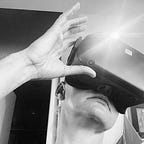The Surprising Technology That Can Make Your Organization Truly Inclusive
Being confronted with your own bias is never enjoyable. Several years ago, I was training a colleague on some new procedures, and I just forwarded along a detailed text document and told him to reach out if he had questions. A few days later, I followed up with him, and he admitted he hadn’t gotten all the way through it, despite the fact that a document like that would have only taken me an hour to read, at most. I was frustrated and internally questioned his commitment to the job, but then, luckily, he chose to confide in me. He not only spoke English as a second language, but had struggled with dyslexia most of his life, and what I perceived as an easy and straightforward way to learn new information was actually very difficult for him. We wound up doing a session where I walked him through things and recorded audio and video explainers, and that was much more useful.
I raise this because, while we spend a lot of time talking about diversity and inclusion in hiring practices, we don’t spend enough time talking about diverse learning styles for training, and how to be inclusive of those different styles. Some people learn best by reading, others by listening, and others by watching — but lots of people learn best by doing and practicing. In the real world, though, that is often impossible, due to budgetary constraints and safety concerns. And for certain DE&I practices, all the lectures and articles in the world will never replicate the visceral feeling of being discriminated against or left out.
Virtual reality allows users to actually learn by doing in a safe, controlled environment. It can provide users with low literacy levels a chance to learn in a hands-on manner, and thus have better access to good jobs. It provides managers a chance to make mistakes in a safe place, rather than mis-managing people. And it allows all this to happen at scale, because one-on-one training is expensive and time consuming.
If organizations are truly committed to diversity and inclusion, that must include diverse learning styles. Virtual reality is the only way to do hands on learning and training at scale, in a socially distanced environment. How many people are being left behind, or being passed over for promotions, because organizations hesitate to make the relatively small investment to develop their skills and abilities?
VR is still a developing technology, but the headsets are getting better and less expensive every year. There are great resources for content development out there, and platforms to help build out and deliver that content to learners. Even with the added upfront costs, think of how many employees organizations will be able to upskill and engage, and what that payoff will look like. If organizations truly want to be inclusive of everyone, they need to start investing in VR training.
Case study: workplace inclusion
“Are you sure you used the latest data to make your recommendation?” your colleague asks you, subtly implying that you haven’t done your homework. “We all use a shared drive with the latest reports,” she says, gesturing to other co-workers around the table, “but I guess we might have forgotten to give you access.”
Many of us have dealt with exclusionary behavior at the office — whether it’s colleagues who form cliques or a boss who openly prefers a chosen successor at the expense of others. But there are also plenty of people in positions of power whose backgrounds mean they’ll never experience anything like this — until they put on a virtual reality (VR) headset.
In 2019, my company was working on a piece to try to help those leaders understand workplace exclusion. As we wrapped the final day of user testing, we had one more participant — a middle aged white man who was a manager at his family business. He came in skeptical of the technology, and I cringed, reminding myself that our other testers had been positive and given good feedback. He put on the headset and went through the experience; when he finished, he was silent, and I braced myself for the worst.
“That wasn’t a conversation,” he said. “That was an emotional experience.” He then spent the next hour unpacking the concept of privilege, something he’d only thought about in the abstract before. By the end, the user tester had to rush him out the door in order to make school pickup, and I was thrilled.
He came back two weeks later, with even better news. He had started calling on equal numbers of men and women in meetings, and had taken a hard line against interrupting in those meetings as well. He got a positive response from all parties involved, and barely needed to remind people to not cut each other off any more.
This type of change is possible at every organization — but the initial investment needs to happen from the top. Leaders must invest in VR and inclusive training in order to stay current and make sure all their employees have a fair shot at learning the skills they need in the way that works best for them.
